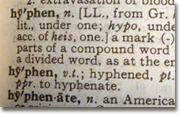How often have we said that, and really, really meant it? And how often have we followed through? 
How important is it to keep in touch?
I want to tell you about something terrific that happened just this morning. I’d finished the usual “get ready for the day” tasks, and was settling in to do some serious work when the phone rang. Much to my delight – and I have to admit, surprise – the woman on the other end of the line had been in one of my workshops probably 10 or 15 years ago, had found my website, and was calling to order some materials for her staff.
It just does not get any better than that!
Yet much as I like to provide helpful materials – and we are working on some new materials right now – the biggest thing to me was that she remembered me, looked me up, and called!
So what are some of the reasons some of us may fall a bit short in the “keeping in touch” area? And what can we do about them?
Well, for one thing, there is always so much to do on the job that keeping in touch, especially when there is nothing immediate or pressing, somehow falls to the bottom of the “to do now” stack. Too busy? Most of us are – I rarely hear from anyone who is looking for “something to do”!
Maybe it’s because we feel a little awkward, or nervous about our writing skills, worried that because of our writing skills, we might lower ourselves in this reader’s estimation if we were to email him or her, just to keep in touch. And perhaps we don’t want to telephone because we fear that the person on the other end of the line will think that any time we call we want something.
Or realistically, we may understand that the person we want to keep in touch with is just as busy as we are, and we don’t want to become a nuisance.
“Nuisance” can happen, as we all know. Rule of thumb: Communicate at a comfortable contact frequency level not only for your reader (or call recipient), but for yourself as well. Is that interval for keeping in touch once a year? Quarterly? Weekly? Daily? Clearly, we do not want to make pests of ourselves (and that’s another reason we don’t keep in touch, or get back in touch), but I am willing to bet that even if you have not been in touch for a year or more, that person will likely be pleased to hear from you, particularly when you have something of interest, or of value to share with him or with her.
How do you do it?
Here’s one way: From time to time, you’ve probably read an article, or a blog post that made you think of something you discussed at one point, maybe even years ago, with that person or persons. If you think it might be useful to him or her, attach it to an email, or clip and postal mail it with a quick note. The advantage of the email is that it is easy, takes very little time, and most people check their email fairly often. But will they open it? The advantage of postal mail is that it is rather unusual to get something from the letter carrier, which may enhance your chances of having it opened, especially if it neither looks like, nor is, an ad.
If your contact has been more recent, perhaps offering your blog posts or newsletters may be an unobtrusive way to keep in touch. Just be sure the receiver requests, and wants to receive this material from you, that the material could be of value to him or to her, and that you don’t confuse blog posts and newsletters with sales letters and advertising. Advertising, sales-oriented, and promotional materials and campaigns are a separate issue, and not an appropriate “keep in touch” device.
We invite you to subscribe to our blog, and to our newsletter.
Gail Tycer offers business writing workshops and presentations, executive coaching, consulting, and writing services. To discuss how we can help, call Gail at 503/292-9681, Toll-free at 888-634-4875 or email gail@gailtycer.com



 [
[